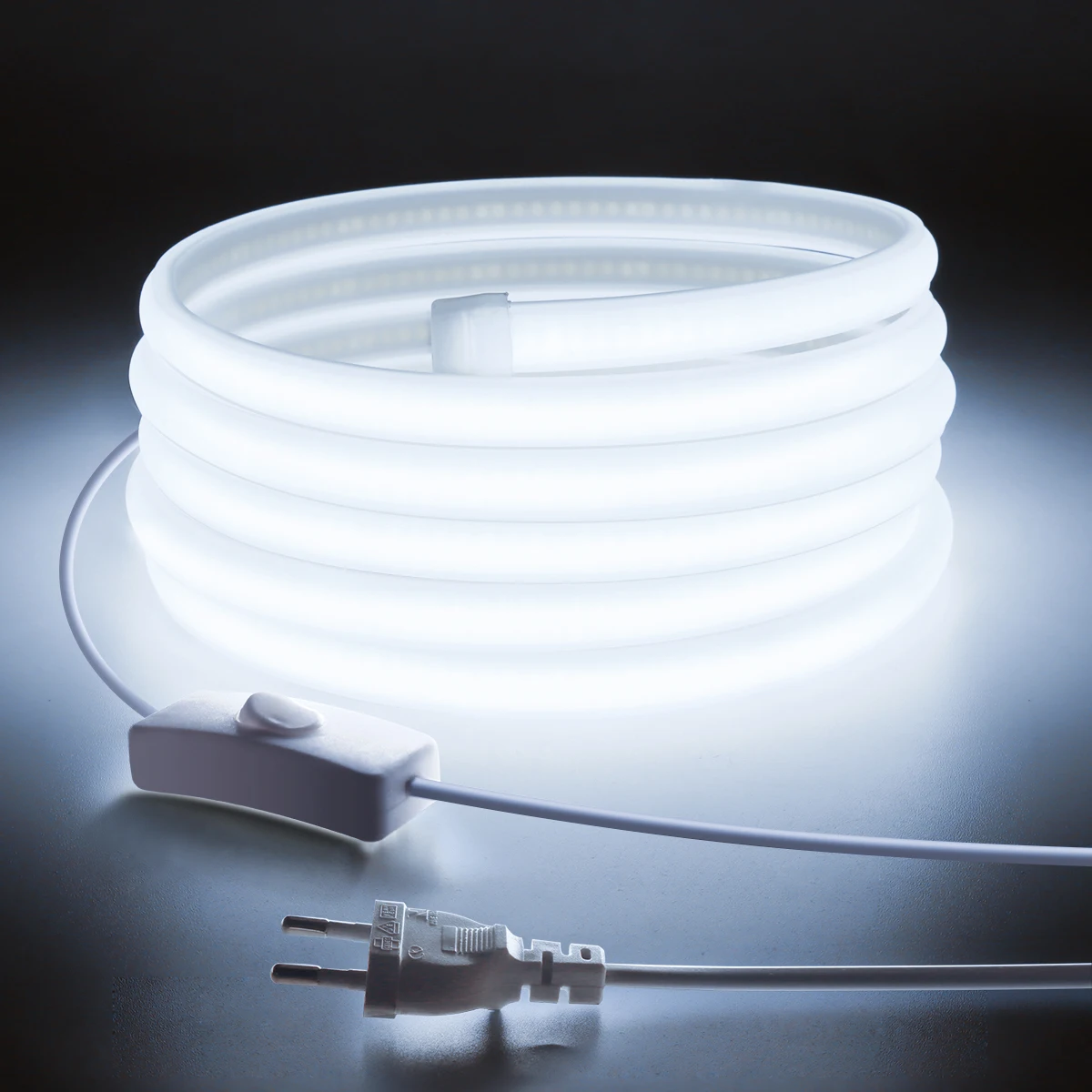Leuchtdioden, oder LED-Leuchten, haben dank ihrer verlängerten Lebensdauer die Beleuchtungsbranche völlig verändert, Energiewirtschaft, und Robustheit. Eine von Kunden häufig gestellte Frage ist jedoch, ob LED-Leuchten durchbrennen könnten. In order to comprehend this, we must investigate the operation of LED lights, the variables influencing their longevity, and the potential failure scenarios.
Recognizing LED Technology
Traditional fluorescent and incandescent lighting are fundamentally different from LED lighting. An LED is a semiconductor that, when an electric current flows across it, emits light. LEDs produce light using a process called electroluminescence, in which electrons recombine with holes inside the semiconductor material to release energy in the form of photons. This is different from incandescent bulbs, which produce light by heating a filament until it lights.
Duration of LED Lighting
The extended lifespan of LED lights is one of their most praised features. An LED light can often last up to 50,000 Std., or longer, depending on the LED’s quality and usage. Compared to fluorescent lights (um 8,000 Zu 15,000 Std.) and incandescent bulbs (around 1,000 Std.), this is a far longer lifespan.
Nevertheless, a precise definition of “burn out” is required. Conventional incandescent light bulbs burn out when their internal filament breaks. In contrast, LEDs do not burn out in the same manner. Rather, over time, they progressively lose their brightness—a process called lumen depreciation.
Reasons for LED Light Failure
The failure of LED lights, which resembles “burning out” while having a different mechanism than conventional bulbs, can be caused by a number of circumstances.
- Temperature Control
Heat has a big impact on how long LED lights last. LEDs still generate some heat, even though they are more effective than incandescent bulbs at converting energy into light rather than heat. The LED chip and other parts may sustain harm if this heat is not appropriately controlled.
To efficiently dissipate heat, the majority of high-quality LED lights are built with heat sinks or other thermal management mechanisms. Jedoch, overheating can happen and cause an early failure if the LED is utilized in an enclosed fixture without enough ventilation or if the heat sink is inadequate.
- Problems with the Power Supply
The quality of an LED’s power source, also known as the driver, has a significant impact on how long it lasts. The LED chip is supplied with a consistent and suitable amount of power thanks to the driver, which controls the amount of electricity that gets to it. When drivers of low quality or those subjected to voltage fluctuations malfunction, LED lights may flicker, fade, or stop functioning completely. - Environmental Elements
The lifespan of LED lights can also be impacted by environmental factors like humidity, temperature extremes, and exposure to dust or corrosive materials. LEDs that are utilized outside or in abrasive industrial settings must be built to last under these circumstances. - Quality of Manufacturing
The durability of LED lights is largely dependent on the caliber of the components and the production techniques used. Reputable manufacturers’ high-quality LEDs usually outperform their less expensive, lower-quality counterparts in terms of performance and lifespan. Early failures might be caused by inadequate assembly, inferior components, and poor soldering. - ESD, or electrostatic discharge
Electrostatic discharge, which can harm internal components and semiconductor material, can cause damage to LEDs. To avoid ESD damage, handling must be done carefully and precautions must be taken throughout installation and production.
Indications of LED Light Failure
In contrast to incandescent bulbs, which burn out suddenly, LED lights typically exhibit symptoms of degeneration before to total failure. Among these indicators are:
Dimmable Light Output: As LEDs age, their light output may decrease. This steady decrease in brightness is a normal aspect of the LED aging process.
Color Shift: Over time, an LED’s light may take on a different hue. For instance, as an LED ages, a white one may begin to emanate a reddish or yellowish color.
Flackern: Flickering may be an indication of an electrical supply problem or an issue with the LED driver.
Intermittent Operation: Driver or connection problems may be the cause of an LED that periodically turns off and then back on.
How to Avoid LED Light Failure
The following advice will help extend the life of LED lights and avoid early failure:
Correct Installation: Verify that heat sinks and other thermal management systems are not hindered, and that LEDs are mounted correctly.
Goods: Make an investment in LED lights of the highest caliber from reliable producers. Seek for goods with solid performance ratings and guarantees.
Ausreichende Belüftung: Unless LEDs are made expressly for this purpose, do not use them in enclosed fixtures. Make sure there is enough ventilation to release heat.
Consistent Power Source: To shield LEDs from power fluctuations, use voltage stabilizers and surge protectors.
Regular Maintenance: Dust and debris can interfere with heat dissipation and overall performance, so keep LED lights and their fixtures clean and clear of them.
Zusammenfassend
Even while LED lights don’t burn out in the conventional sense, they can nevertheless malfunction for a variety of reasons, including inadequate heat management, shoddy construction, unfavorable environmental circumstances, and electrical problems. By being aware of these variables and taking the necessary action, LED lights can last longer and continue to provide dependable, effective lighting for many years.
Abschließend, LED lights are not immune to failure even if they do not burn out in the same manner as incandescent bulbs. Utilizing LED technology correctly, choosing high-quality products, and providing enough maintenance are essential to avoiding problems and reaping its long-term advantages.
